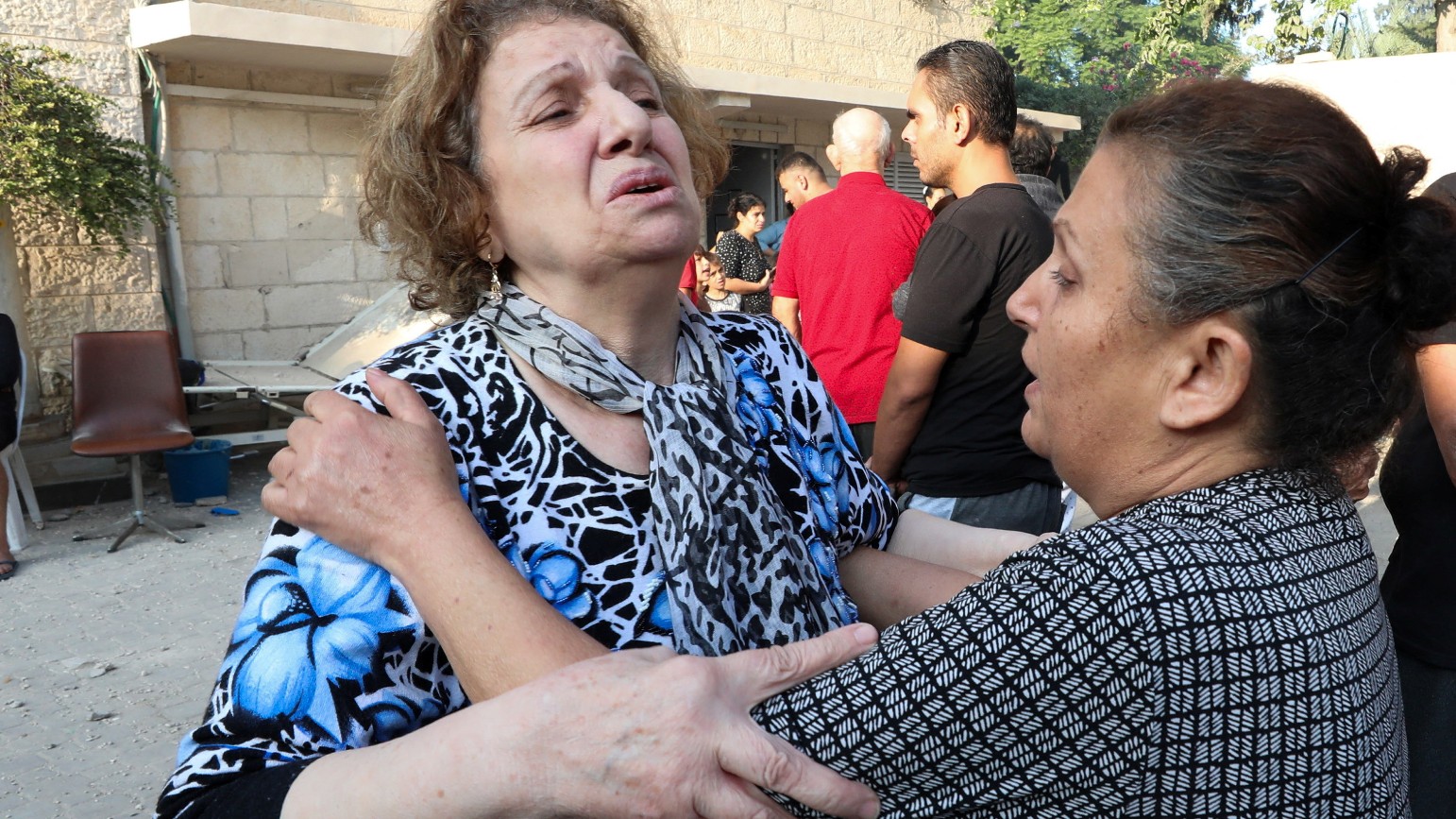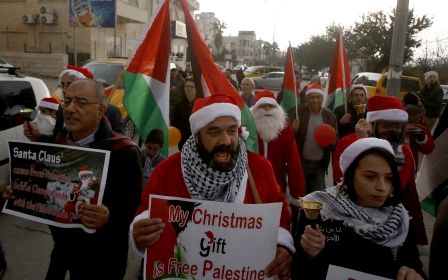Israel-Palestine war: A quick history of Christianity in Gaza

Israel’s attack on the fifth-century Church of Saint Porphyrius in Gaza has turned the spotlight on the besieged Palestinian enclave’s Christian population.
At least 18 people were killed in the bombing on a social services annex in the church's complex of buildings. Both Muslims and Christians took shelter within its walls hoping that its historical and religious importance would spare it the carnage that has affected other areas of Gaza.
As part of historic Palestine it is impossible to disconnect the history of Palestinian Christians in Gaza from those who share their faith in the occupied West Bank, Jerusalem and within the Palestinian community in Israel.
The region is the birthplace of Christianity and the location of many of the events of the Old and New Testaments of the Bible.
Palestinian Christians in Gaza, like other Palestinians there, do not see themselves as detached from the wider Palestinian nation.
Stay informed with MEE's newsletters
Sign up to get the latest alerts, insights and analysis, starting with Turkey Unpacked
Nevertheless, there is a unique Christian history specific to Gaza. While just over a thousand Christians remain in Gaza, the territory holds a special significance in the development of the faith.
The region is referred to by name in the New Testament in Acts 8, which refers to Philip the Evangelist baptising a man from Ethiopia on the road between Jerusalem and Gaza.
“Now an angel of the Lord spoke to Philip, saying, ‘Arise and go toward the south along the road which goes down from Jerusalem to Gaza.’ This is a desert,” the verse reads.
Follow Middle East Eye's live coverage for the latest on the Israel-Palestine war
There are also several historic Christian sites that are not only important locally but carry importance for Christians generally.
The site of the Israeli attack on Thursday evening, the Saint Porphyrius Church, is one of the most important religious sites in Palestine.
Named after a fifth-century bishop, the site is one of the oldest surviving places of worship in the region and one of the oldest churches in the world.
The church was initially built in 425 CE and then later reconstructed by Crusaders in the 12th century, with much of the present structure dating back to that period.
Another major Christian site in Gaza is the nearby and even older Tell Umm Amer monastery.
The fourth-century structure, which now lies mainly in ruins, once included churches, a baptism hall, a cemetery and crypt.
It served as a place of worship for those travelling between Egypt and the lands of the Levant, including Palestine and Syria.
The site is notable for being the birthplace of Saint Hilarion, a fourth-century Palestinian monk, who helped pioneer monasticism.
The spread of Christianity
The presence of these early churches and monasteries, as well as the Biblical reference, indicate that Christianity in Gaza took root in tandem with the development of the faith in the region.
But widespread adoption of the faith did not take place until the fifth century.
According to the scholar Nicole Belayche, the strength of pagan cults in Gaza before the fifth century is “indisputable”.
In her essay in the book Christian Gaza in Late Antiquity, she writes that when Porphyrius was ordained bishop of Gaza, the Christian population stood at “less than three hundred in a population estimated at between 20,000 and 25,000”.

Gaza’s mass conversion to Christianity started in the fifth century under the auspices of the Byzantine Empire, the successor to the Eastern Roman Empire.
“It was a hard process, one requiring recourse to imperial intervention,” she writes.
Initial reluctance was overcome by the efforts of holy men, such as Porphyrius, and incorporation of indigenous ritual into church rites, Belayche explains.
While Christianity was widely adopted by the end of the sixth century, it was not long before there was a new dominant religion.
In his book History of the City of Gaza, the late 19th century Jewish-American scholar Martin A Meyer writes: “The new faith had barely sufficient time to establish itself before Islam swept it away from this part of the world forever.”
Meyer’s statement is hyperbolic but touches on the truth that over the centuries that followed the Arab conquest, much of the region’s population converted to Islam.
There still remained a small Christian minority in the area of Gaza, which survived for centuries and enjoyed a brief flourishing under Crusader rule in the 12th century.
Modern Christianity
Like their fellow Palestinians, many of the region’s Christians were forced from their homes during the establishment of the state of Israel in 1948.
As a result, the Christian population of Gaza has dwindled further over the decades, a trend that has continued after the Nakba.
According to the Guardian, there were 6,000 Palestinian Christians in Gaza in the mid-1960s and that number has fallen to 1,100 today.
Most Christians in the besieged region today follow the Greek Orthodox Church, while minorities follow the Baptist and Catholic churches.
Since the Israeli siege of Gaza began in 2007, Christians have faced similar restrictions on movement as their Muslim neighbours have to live under.
Cut off from larger Christian communities in the West Bank and Jerusalem, members of the faith require Israeli permits to travel to those areas for religious occasions.
In 2021, Israel issued permits for around half of the Palestinian Christian population in Gaza to attend Christmas services.
Such rights to attend rituals are by no means guaranteed, as evidenced by Israel’s decision to cancel 700 permits for Christians in Gaza to attend Easter services in Jerusalem.
Israel similarly rejected permit applications for 260 Palestinians in Gaza wanting to spend Christmas outside of the territory, either in the occupied West Bank or elsewhere.
Despite their small number, Churches in Gaza have regularly opened their doors to adherents of any faith to seek shelter during times of conflict, in the hope that houses of worship will not be attacked by Israel.
Such hopes may fade fast after the most recent Israeli attack on the Church of Saint Porphyrius.
This article is available in French on Middle East Eye French edition.
Middle East Eye delivers independent and unrivalled coverage and analysis of the Middle East, North Africa and beyond. To learn more about republishing this content and the associated fees, please fill out this form. More about MEE can be found here.






